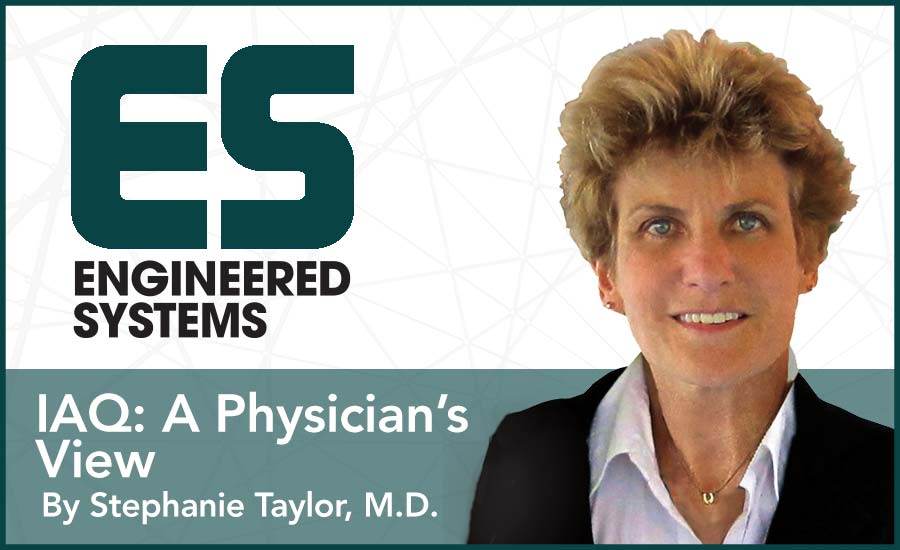Just like students in a university classroom, bacteria are adept at learning and responding to new information. Exactly how bacteria respond to environmental forces can be difficult to study when there are ongoing changes in the microbial community — changes such as the introduction of new organisms from soil, variations in temperature or humidity levels, or humans shedding microbes on skin flakes or in exhaled droplets.
Surprisingly, isolated space stations provide an excellent setting to study bacteria without the many variations found on Earth. What exactly can bacteria residing in spaceships tell us about building disinfection and indoor air management on earth? The space laboratory can demonstrate how microbes might respond to our building cleaning interventions, such as radiation from UV-C lights in HVAC ducts, oxidation from hydrogen peroxide aerosols in hospital rooms, desiccation from dry indoor air, and other earthly environmental stressors. If bacteria are going to evolve superpowers from our disinfection efforts, we should know sooner rather than later.
Researchers in Russia analyzed dust samples from the Russian International Space Station where crews of three to 10 astronauts, as well as billions of microorganisms, have been housed since 2000. Most of the bacteria recovered in spaceship dust were species from the human occupants, which is predictable given that humans spread around one million bacteria per hour through breathing and skin shedding, and given the lack of other potential microbe sources.
In this study, the dust samples collected from the space station were saved in desiccation chambers on the ground for eight to 12 years. Following this time, the bacterial isolates were rehydrated, incubated, and analyzed. Using both traditional culturing techniques and new genetic sequencing tools, microbiologists found that the majority of the revived isolates had survived the space conditions and dry storage by evolving protective strategies. For example, bacteria formed spores with tough outer membranes which provided protection against high temperatures and dry air. DNA-repair mechanisms and secretion of anti-oxidant enzymes combated otherwise lethal radiation. The recovered cosmonaut bacteria not only grew vigorously but were much more resilient to radiation, high temperatures, aerosolization in dry air, and starvation than similar strains living an easy life on earth.
Not only did most of the bacteria survive the environmental stressors, but many also showed increased resistance to antibiotics. Nineteen representative bacterial isolates were tested for their susceptibility to 17 different antibiotics commonly used in a clinical setting. Only one isolate showed no resistance towards all tested antibiotics, while the more resilient isolates showed resistance against eight of the 17 tested antibiotics. One isolate was resistant to all of the tested antibiotics except gentamicin, a powerful anti-microbial agent used to treat methicillin resistant Staphylococcus Aureus (MRSA). Additional studies on astronauts in space have confirmed that bacterial infections in the urinary tract, upper respiratory tract, and skin tissues progress more rapidly than on Earth. Recently, it was shown that even a short space flight could trigger the rapid development of antimicrobial resistance in the ubiquitous skin bacteria species Staphylococcus Aureus.
This study showed that bacteria exposed to environmental stresses similar to ones we create while decontaminating hospitals and other buildings can respond to our cleaning efforts by becoming even more infectious, including developing increased levels of antibiotic resistance. As we implement advanced disinfection technologies for buildings and indoor air, we must not underestimate the adaptive survival capabilities of rapidly evolving bacteria, fungi, and viruses. One essential lesson from our widespread use of antibiotics starting in the 1940s, which has resulted in medication-resistant “Superbugs” decades later, is that bacteria and other microbes are here to stay.
Given what we are learning about the health benefits of a balanced bacterial microbiome in our digestive tracts, what would the future of indoor air management and surface disinfection look like if, instead of trying to totally eradicate microbes, we repopulated our indoor environments with a healthy probiotic mix of “good” bacteria? This strategy is being promoted by scientists who are well informed about the microbiome of the built environment and is something to think about.



